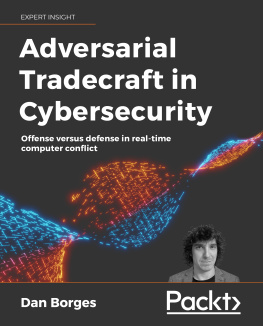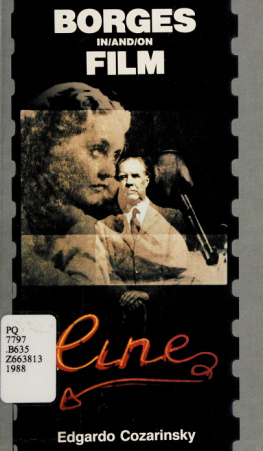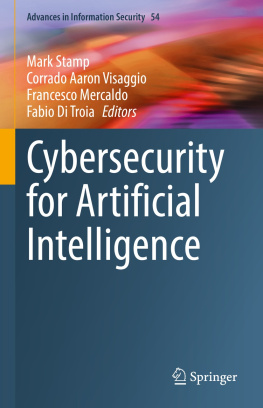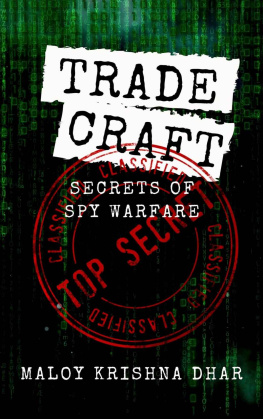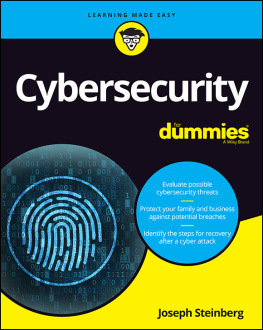Dan Borges - Adversarial Tradecraft in Cybersecurity
Here you can read online Dan Borges - Adversarial Tradecraft in Cybersecurity full text of the book (entire story) in english for free. Download pdf and epub, get meaning, cover and reviews about this ebook. year: 2021, publisher: Packt, genre: Romance novel. Description of the work, (preface) as well as reviews are available. Best literature library LitArk.com created for fans of good reading and offers a wide selection of genres:
Romance novel
Science fiction
Adventure
Detective
Science
History
Home and family
Prose
Art
Politics
Computer
Non-fiction
Religion
Business
Children
Humor
Choose a favorite category and find really read worthwhile books. Enjoy immersion in the world of imagination, feel the emotions of the characters or learn something new for yourself, make an fascinating discovery.
- Book:Adversarial Tradecraft in Cybersecurity
- Author:
- Publisher:Packt
- Genre:
- Year:2021
- Rating:3 / 5
- Favourites:Add to favourites
- Your mark:
- 60
- 1
- 2
- 3
- 4
- 5
Adversarial Tradecraft in Cybersecurity: summary, description and annotation
We offer to read an annotation, description, summary or preface (depends on what the author of the book "Adversarial Tradecraft in Cybersecurity" wrote himself). If you haven't found the necessary information about the book — write in the comments, we will try to find it.
Adversarial Tradecraft in Cybersecurity — read online for free the complete book (whole text) full work
Below is the text of the book, divided by pages. System saving the place of the last page read, allows you to conveniently read the book "Adversarial Tradecraft in Cybersecurity" online for free, without having to search again every time where you left off. Put a bookmark, and you can go to the page where you finished reading at any time.
Font size:
Interval:
Bookmark:

Adversarial Tradecraft in Cybersecurity
Offense versus defense in real-time computer conflict
Dan Borges

BIRMINGHAMMUMBAI
Adversarial Tradecraft in Cybersecurity
Copyright 2021 Packt Publishing
All rights reserved. No part of this book may be reproduced, stored in a retrieval system, or transmitted in any form or by any means, without the prior written permission of the publisher, except in the case of brief quotations embedded in critical articles or reviews.
Every effort has been made in the preparation of this book to ensure the accuracy of the information presented. However, the information contained in this book is sold without warranty, either express or implied. Neither the author, nor Packt Publishing or its dealers and distributors, will be held liable for any damages caused or alleged to have been caused directly or indirectly by this book.
Packt Publishing has endeavored to provide trademark information about all of the companies and products mentioned in this book by the appropriate use of capitals. However, Packt Publishing cannot guarantee the accuracy of this information.
Producer: Dr. Shailesh Jain
Acquisition Editor Peer Reviews: Saby Dsilva
Project Editor: Janice Gonsalves
Content Development Editor: Bhavesh Amin
Copy Editor: Safis Editing
Technical Editor: Aniket Shetty
Proofreader: Safis Editing
Indexer: Manju Arasan
Presentation Designer: Pranit Padwal
First published: June 2021
Production reference: 1070621
Published by Packt Publishing Ltd.
Livery Place
35 Livery Street
Birmingham
B3 2PB, UK.
ISBN 978-1-80107-620-3
www.packt.com
Dan Borges is a passionate programmer and security researcher who has worked in security positions for companies such as Uber, Mandiant, and CrowdStrike. He has served in several security roles, from penetration tester to red teamer, and from SOC analyst to incident responder. Dan has been programming various devices for more than 20 years, with 14+ years in the security industry. He has been a member of the National Collegiate Cyber Defense Competition's red team for eight years and a director of the Global Collegiate Penetration Testing Competition for five years.
I'd like to thank several people for their help putting this book together. Alex Levinson, Lucas Morris, Louis Barrett, Chris McCann, Javier Marcos, John Kennedy, and Jess Redberg, for their inspiration and help editing this text. As well as my long time CTF companion, Taylor Leach, who also designed the cover art for this book. There are many more people that I can't fit here but have a deep respect and admiration for.
Jeff Foley has 20 years of industry experience focused on applied research & development and assessment of security in critical information technology and infrastructure. He is the project leader for Amass, an OWASP (Open Web Application Security Project) Foundation flagship project that performs in-depth attack surface mapping and asset discovery. Jeff is also an adjunct lecturer teaching Penetration Testing at the SUNY (State University of New York) Polytechnic Institute. Previously, he was the US Manager for Penetration Testing and Red Teaming at National Grid, a multinational electricity and gas utility company. Prior to this, Jeff served as the Director of Penetration Testing and Security Assessment at Northrop Grumman Corporation, an American global aerospace and defense technology company. In his spare time, Jeff enjoys experimenting with new blends of coffee, spending time with his wife and four children, and giving back to the information security community.
Joe DeMesy is a principal consultant and red team lead at Bishop Fox. Bishop Fox is a security consulting firm providing IT security services to the Fortune 500, global financial institutions, and high-tech start-ups. In this role, he focuses on penetration testing, source code review, mobile application assessments, and red team engagements. Joe is an active contributor to the open-source community, and co-authored Sliver, a red team adversary emulation framework.
This book provides some theories and tools to prepare readers for the fast-paced and subversive world of cyber conflict. This book is designed to give competitors in various infosec attack and defense competitions a serious advantage, through providing theory, scripts, and techniques that will put the opponent on the backfoot. These same strategies can easily be applied to a real-world cyber incident, giving incident responders new tricks to deceive and best attackers. This book draws from years of competition experience, many well-accepted industry concepts, and existing open source tools rather than reinventing the wheel each chapter. The goal of Adversarial Tradecraft in Cybersecurity is to dive deep into both deceptive attacker techniques and detections. This text starts with a chapter on theory to help prepare readers for the following chapters, followed by a chapter focused on setting up supporting infrastructure. After that, the book works through various escalating techniques that may be leveraged by either side in a cyber conflict. Chapters 3 through 8 cover tactics, techniques, and tools that both sides can leverage to get the advantage in a conflict. Chapter 8 specifically goes into how to resolve a conflict and remediate an intrusion such that the attacker doesn't maintain access. A synopsis of each chapter can be found below, covering some of the high-level topics included in the book.
This book is for intermediate cybersecurity practitioners, from defensive teams to offensive teams. This book can still be utilized by beginners, but it may require the aid of some heavy googling to get the required background information on topics I cover quickly. This book is designed to give practitioners an advantage in attack and defense competitions, such as the Collegiate Cyber Defense Competition (CCDC), although many of these techniques can be used in a real conflict or breach scenario.
Chapter 1, Theory on Adversarial Operations and Principles of Computer Conflict: This chapter is all about theory and setting the reader up with guidance for future chapters. This chapter covers topics such as adversarial theory, CIAAAN attributes, game theory, an overview of offense versus defense in computer security, various competitions these principles can be applied in, and seven additional principles of computer conflict.
Chapter 2, Preparing for Battle: This chapter is all about preparing for a competition, operation, or engagement. This chapter covers topics such as team building, long-term planning, operational planning, infrastructure setup, data collection, data management, KPIs, and tool development.
Chapter 3, Invisible is Best (Operating in Memory): This chapter is all about process injection, hiding in memory, and detecting process injection techniques. This chapter covers topics such as the offensive shift to memory operations, process injection with
Font size:
Interval:
Bookmark:
Similar books «Adversarial Tradecraft in Cybersecurity»
Look at similar books to Adversarial Tradecraft in Cybersecurity. We have selected literature similar in name and meaning in the hope of providing readers with more options to find new, interesting, not yet read works.
Discussion, reviews of the book Adversarial Tradecraft in Cybersecurity and just readers' own opinions. Leave your comments, write what you think about the work, its meaning or the main characters. Specify what exactly you liked and what you didn't like, and why you think so.

